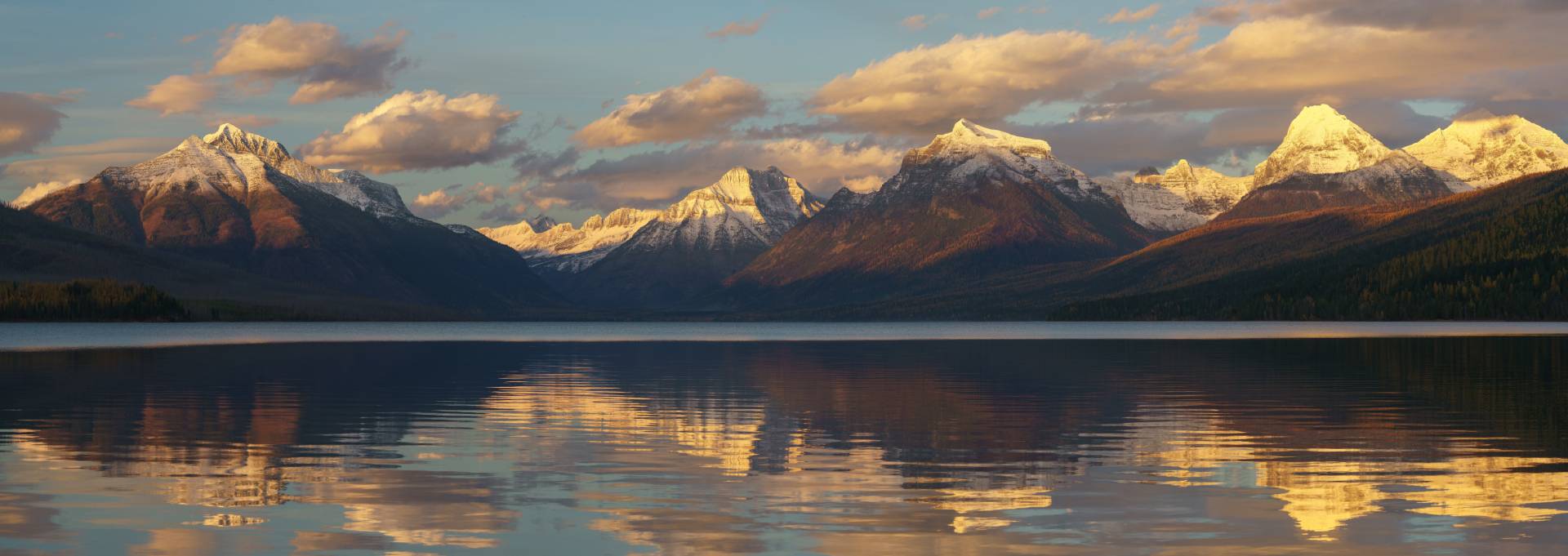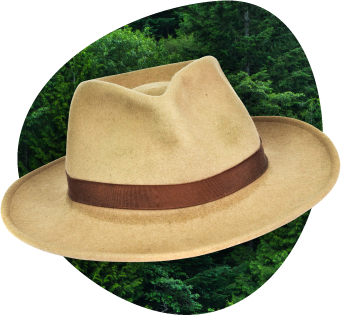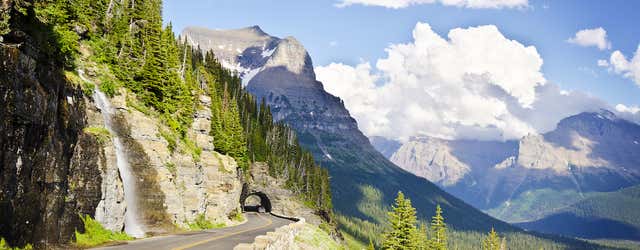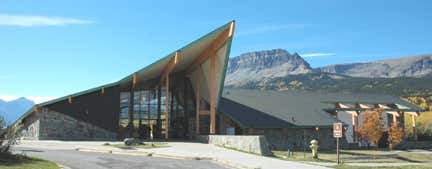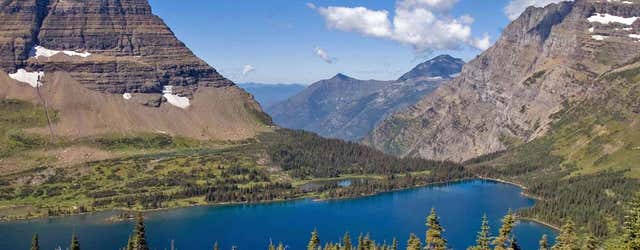Glacier National Park is a wonderland of mountain peaks, lakes, waterfalls, and wildlife. While its famed Going-to-the-Sun Road offers spectacular scenery, the vistas get better the deeper that you delve into the park. For that reason, you’ll want to budget time to hike at least one—if not a half dozen—trails during your stay. However, you should resign yourself to the fact that it’s nearly impossible to experience all of this vast, rugged, and remote park in a single visit. But there’s certainly good reason to not delay getting started. By 2030, scientists predict all the remaining glaciers here will disappear. So grab your camera and a good pair of hiking boots and let’s get started!
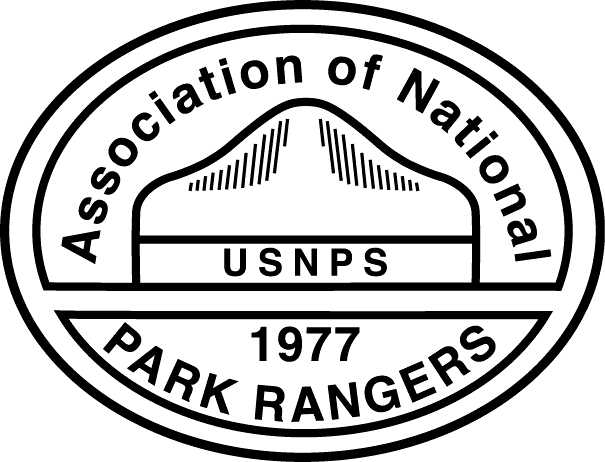
Written for you by park rangers
Who knows a national park best? Yep, the rangers who live and breathe its fresh, clean air every day. That’s who we turned to for help in creating this guide. Roadtrippers has partnered with the Association of National Park Rangers and convinced its rangers to spill their secrets for your benefit.
Getting to Glacier National Park
Located in northwestern Montana, Glacier National Park sits on the U.S.-Canada border. In fact, Glacier and neighboring Waterton Lakes National Park in Alberta form the Water-Glacier International Peace Park, the first of its kind in the world. While administered separately, the parks do cooperate in the management of natural and cultural resources.
Glacier Park International Airport (FCA) in Kalispell has year-round service from five cities—Denver, Las Vegas, Minneapolis, Salt Lake City, and Seattle—in addition to nine other cities during peak season.
As you study a map of Glacier National Park, you’ll discover that there are very few roads. Your vehicle also will play a major role in how you explore the park. On Going-to-the-Sun Road—the only road to cross the park (east to west)—vehicles (or vehicle combinations like a truck and trailer or RV and towed car) can’t be longer than 21 feet or wider than eight feet between Avalanche Campground and the Rising Sun picnic area parking lot. Vehicles over 10 feet will have trouble driving west from Logan Pass because of rock overhangs. Bottom line, if you have a larger RV or a camping trailer, do not drive this road. In addition, if you’re not a fan of driving on a road with blind curves and unforgiving cliffs, you may be better off leaving the drive to someone else entirely.
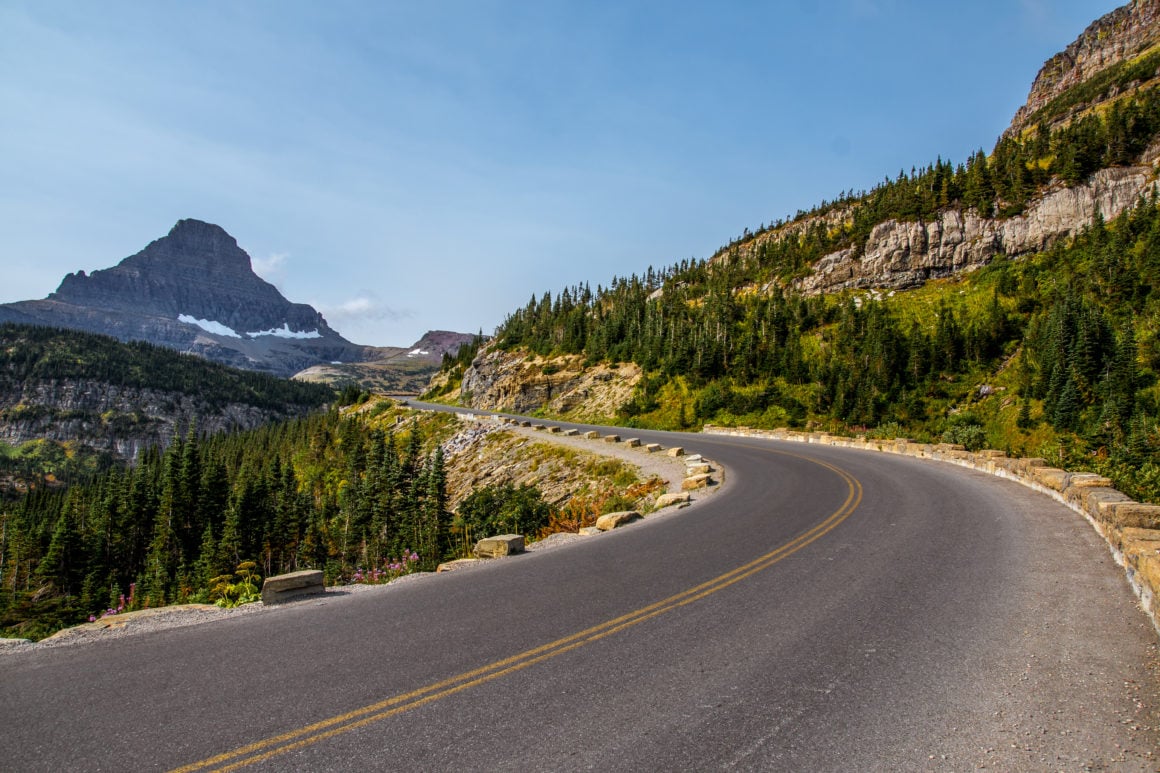
The Glacier Park Express runs between the town of Whitefish to the Apgar Visitor Center (west) during the summer. Once you get to the park, you can use the free Going-to-the-Sun Road Shuttle that stops at many points of interest. However, because so many people visit during such a short window during the summer, the shuttle is often packed. There’s also the fee-based, seasonal Hiker’s Shuttle that connects West Glacier, Apgar, Lake McDonald Lodge, St. Mary, and Many Glacier; reservations are required.
In addition, you can book either a half- or full-day tour. More on those options below.
Timing your visit to Glacier National Park
Weather will be the determining factor on the timing of your Glacier visit.
Summer
Depending on elevation, summer temperatures range from low 40s at night to high 70s during the day. Afternoon summer showers are common. High-country trails sometimes aren’t snow-free until early-to-mid-July. July and August are the peak months for visitors with July being a particularly good month for waterfall viewing. Wildflower lovers will be pleased to know that different species bloom all summer long.
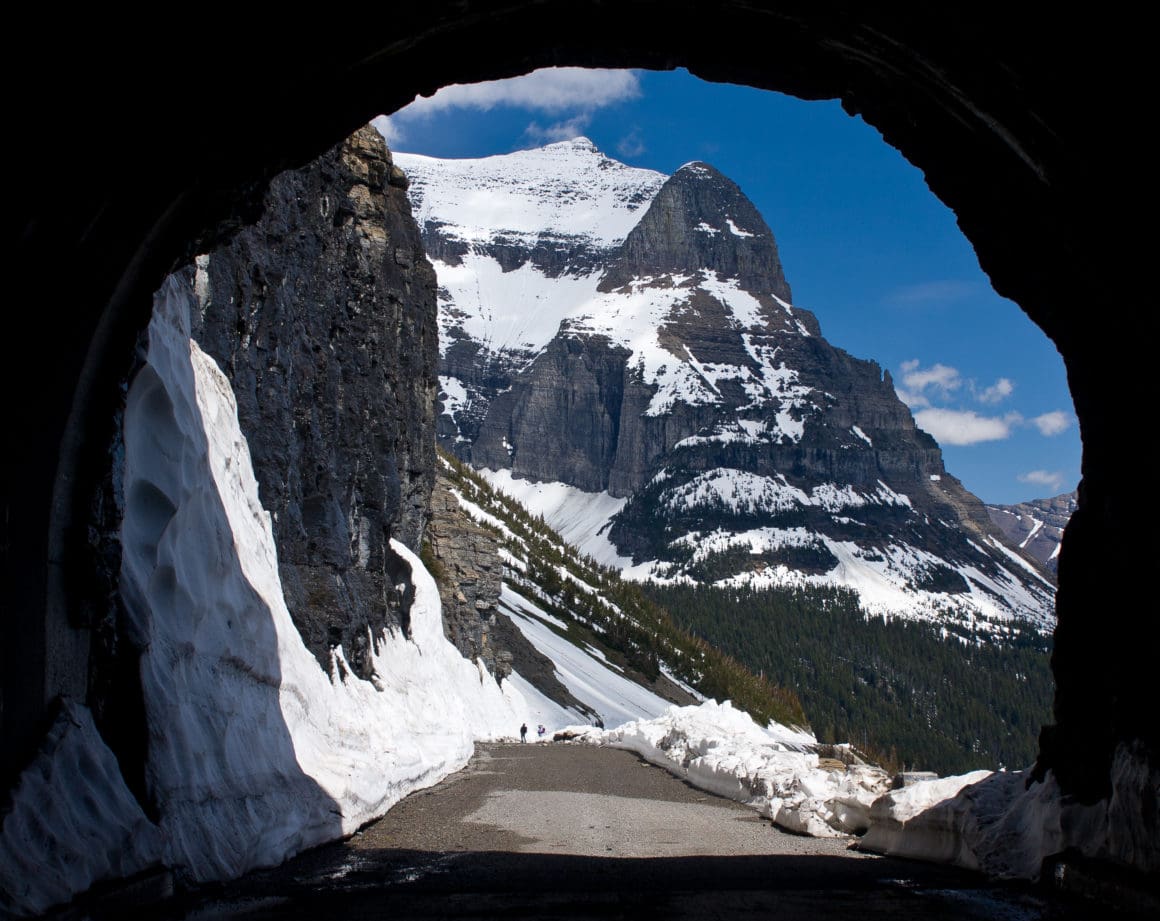
Shoulder seasons and winter
Going-to-the-Sun Road is sometimes not open until late May or even late June and is closed by fall when it snows. In general, most visitor facilities are closed from early October to late May. The park is typically buried in snow from November to April. Winter camping is free. If you visit during the winter, you’ll likely be doing so on snowshoes or cross-country skis, as most roads aren’t plowed. The road to Apgar Village plus 11 miles of Going-to-the-Sun Road on the west side and 1.5 miles on the east side are the only roads maintained during the winter. Check conditions in advance.
Things to do in Glacier National Park
With more than a million acres to explore, you’ll have no shortage of options at Glacier. Unlike other national parks that have specific must-see features, all of Glacier is eye candy. The park is divided into seven sections.
The following are most accessible by road:
- Lake McDonald Valley (west) is a hub of activity with hiking, boat tours and rentals, and horseback riding. It’s also home to inviting Lake McDonald Lodge and the trailhead for the popular Avalanche Lake hike.
- Logan Pass (center) is the highest point reachable by car on Going-to-the-Sun Road. It’s known for its expansive mountain meadows carpeted in colorful wildflowers and occasional viewing of mountain goats.
- Many Glacier (east) is home to picturesque Many Glacier Hotel and the starting point for popular and awe-inspiring Grinnell Glacier Trail.
- St. Mary Valley (east) boasts some of the most remarkable vistas in the park. This area also has strong ties to Native American history and culture.
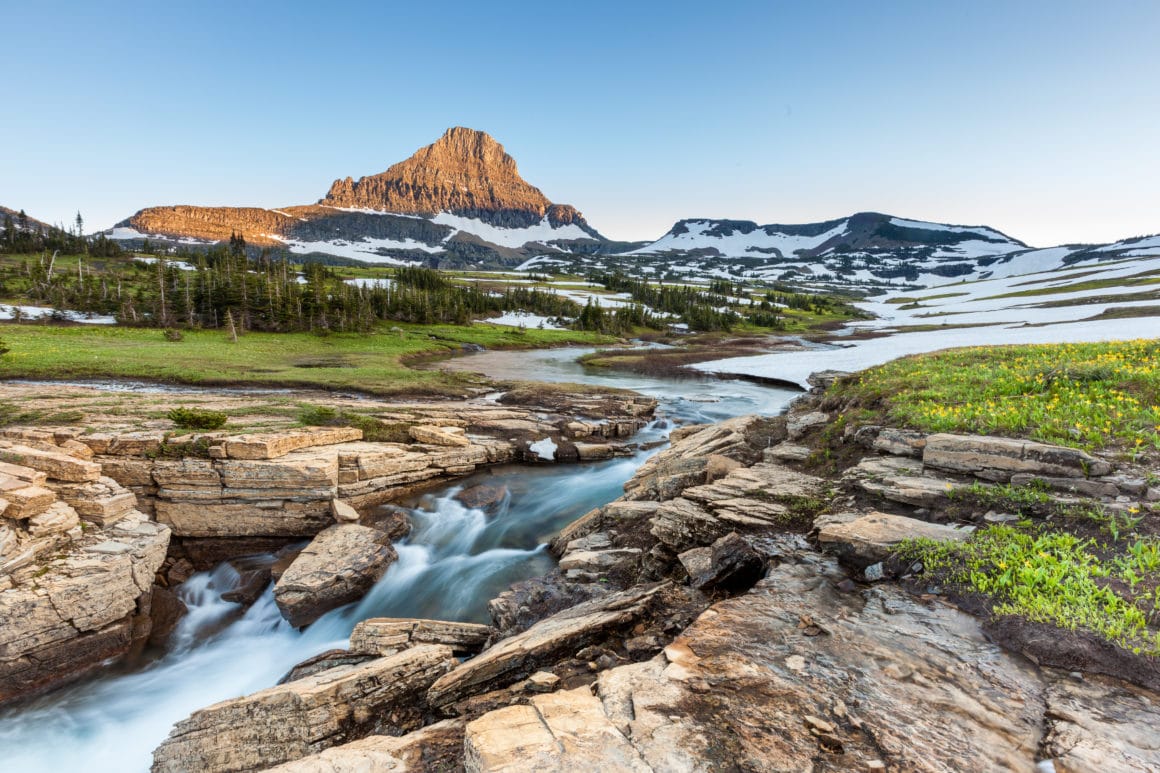
The other areas are remote and difficult to reach:
- Goat Haunt (north) is ideal for backcountry hikers looking to escape the summer crowds.
- North Fork (northwest) is only reachable on rough, dirt roads. Self-reliant visitors will be rewarded with solitude and excellent wildlife viewing.
- Two Medicine (southeast) is less-visited with few facilities, but for those who go, it often becomes their favorite area of the park.
Cell phone signal may be non-existent in many areas of the park. Be sure to always carry a physical map as backup.
Visitor centers
There are three visitor centers in the park:
- Apgar Visitor Center (Lake McDonald Valley) has limited exhibits and mainly serves as a hub for the cross-park shuttle bus. It’s open mid-May through mid-October.
- Logan Pass Visitor Center (Logan Pass) highlights the park’s mountain environment and its glaciers. It’s open early summer through late September.
- St. Mary Visitor Center (St. Mary Valley) focuses on Native American tribes living near the park. Don’t miss the exhibit that shows the stunning retreat of glaciers in the park over the last century. This location also shows the 15-minute park film. It’s open late May through early October.
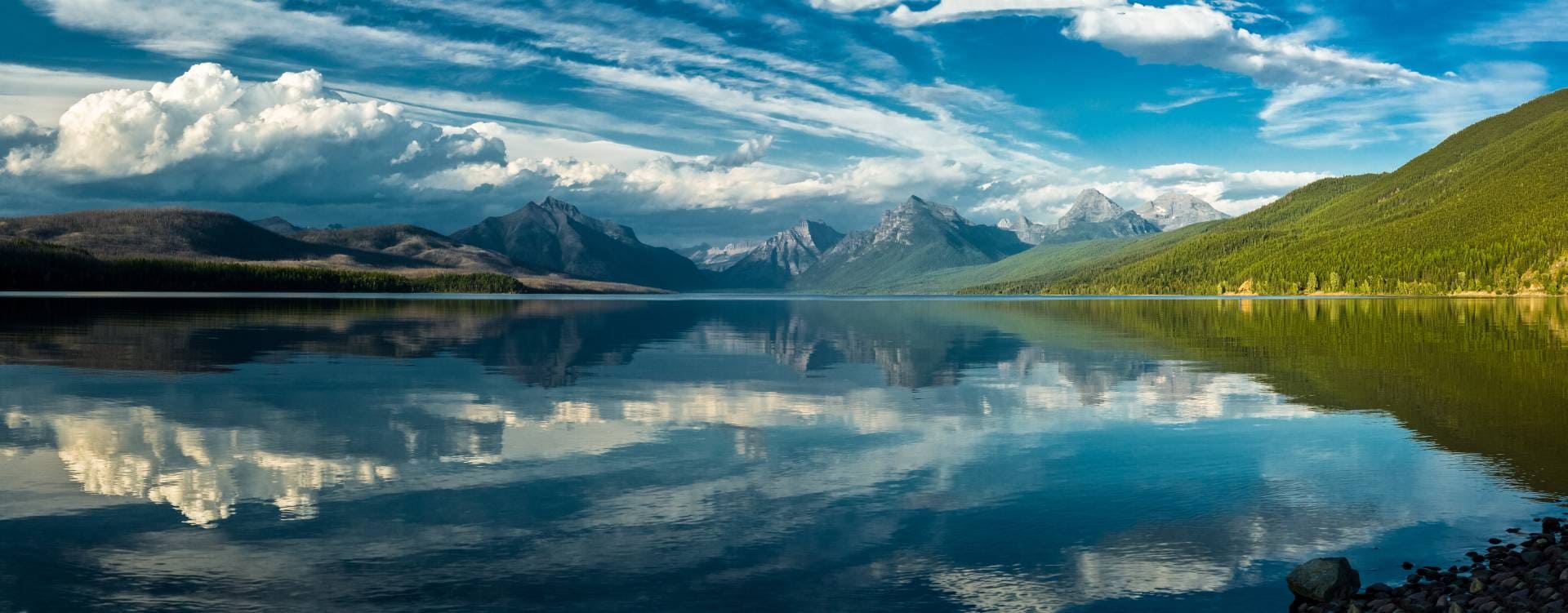
If you’re visiting with kids (ages 5 to 13), pick up their Junior Ranger booklets at any visitor center or download them online before you come.
Scenic drives
Going-to-the-Sun Road is one of the most scenic drives in North America. If you were to drive the 50 miles from West Glacier to St. Mary during the summer, it would take nearly three hours with no stops—but you most definitely will want to stop! As the “Crown of the Continent,” Glacier is the headwaters for streams that flow to the Pacific Ocean, Gulf of Mexico, and Hudson’s Bay, so water features—whether they be glaciers, waterfalls, or glacial lakes—dominate the landscape along with the snow-capped, jagged peaks that tell the geological history of this region.
The historic road is an engineering marvel, and as discussed earlier, it can be a white-knuckle experience. Sun Tours is operated by the Blackfeet and introduces visitors to Glacier through the eyes of the tribe. These tours travel in 25-passenger mini buses. Or consider taking a half- or full-day tour with Red Bus Tours on either the west or east side—or both. Half the fun of this tour is riding in the iconic, open-top, red buses. Each bus seats 17 passengers; the driver, called a Jammer, also is your tour guide. Pickups at major hotels and campgrounds are included in the cost.
Riders (12 and under) can participate in the Junior Jammers program. Ask your driver for a booklet. Answer questions along the way and earn a badge.
If you decide to drive Going-to-the-Sun Road on your own or take the park shuttle, download the free audio tour app from the National Park Service before you arrive at the park. The drives to Many Glacier and Two Medicine are also renowned and equally beautiful.
Boat tours and rentals
Guided boat tours are available at Lake McDonald, Many Glacier, Two Medicine, and St. Mary Lake at Rising Sun; some include guided hikes. Canoe, kayak, rowboat, small motor boat, and stand-up paddleboard rentals are available at Apgar Village, Lake McDonald Lodge, Many Glacier, and Two Medicine. Book with Glacier Park Boat Company. Several rafting companies operate trips on the Middle and North Forks of the Flathead River. Fishing is permitted in the park, but anglers need to follow certain regulations.
Horseback riding
Swan Mountain Outfitters runs all the stables in Glacier National Park, offering one-hour, two-hour, half-day, and full-day tours at Apgar, Lake McDonald, and Many Glacier Corrals. The shorter rides are most appropriate for kids and beginners; ages requirements vary based on corral location.
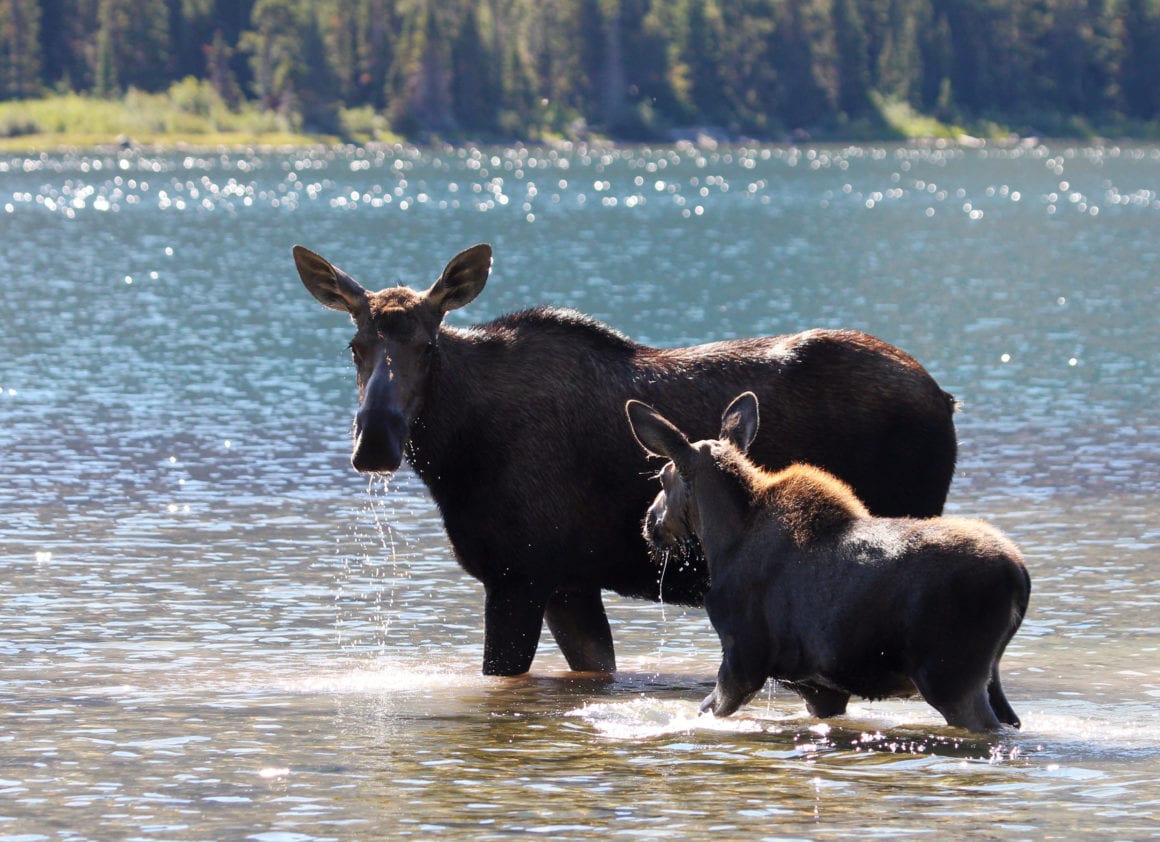
Wildlife
Glacier is home to 71 species of mammals alone—everything from tiny pygmy shrews and picas to majestic elk and moose. Protected since the park’s designation in 1910, wildlife flourishes in this enormous ecosystem.
Snowshoeing
Free ranger-led snowshoe walks are offered on Saturdays and Sundays during the winter from early January to mid-March. Walks start at the Apgar Visitor Center; rentals are available for a small fee. The walks aren’t recommended for kids under six years old.
Ranger and Native American programs
Inquire at a visitor center when you arrive about the various park ranger programs scheduled during your visit. In addition, members from the Blackfeet, Kootenai, Pend d’Oreille, and Salish tribes share their culture and history through the park’s Native America Speaks program. Look for sessions at campgrounds, lodges, and the St. Mary Visitor Center during the summer.
Wide-ranging grizzly bears are common in Glacier. You could see a bear on or off the trail, lunching on huckleberries. Make sure to carry bear spray. Also, it’s a good idea to tie a bell to your backpack to let the bears know that you’re coming, giving them time to exit the area. You can purchase bear spray at a park shop or at an outdoor store before you arrive.
Hiking in Glacier National Park
With more than 700 miles of trails, Glacier National Park is a mountain-hiking paradise.
Parking is extremely limited at all these trailheads, so arrive early in the day.
Here are some of the park’s most popular hikes.
- Avalanche Lake (Lake McDonald) is a moderate, 4.6-mile (round trip) hike that rewards with stunning lake views. The first section of the hike—the Trail of Cedars—is an accessible boardwalk. The entire trail only has 500 feet of elevation gain. Be on the lookout for bears.
- Hidden Lake (Logan Pass) is a moderate, 5.4-mile (round trip) hike with an elevation gain of 1,325 feet. From the west side of the visitor center, the trail leads through a meadow known as the Hanging Gardens, bursting with wildflowers during the summer. Hikers cross the Continental Divide before reaching Hidden Lake in the shadow of Bearhat Mountain. Mountain goats are fairly common near the overlook.
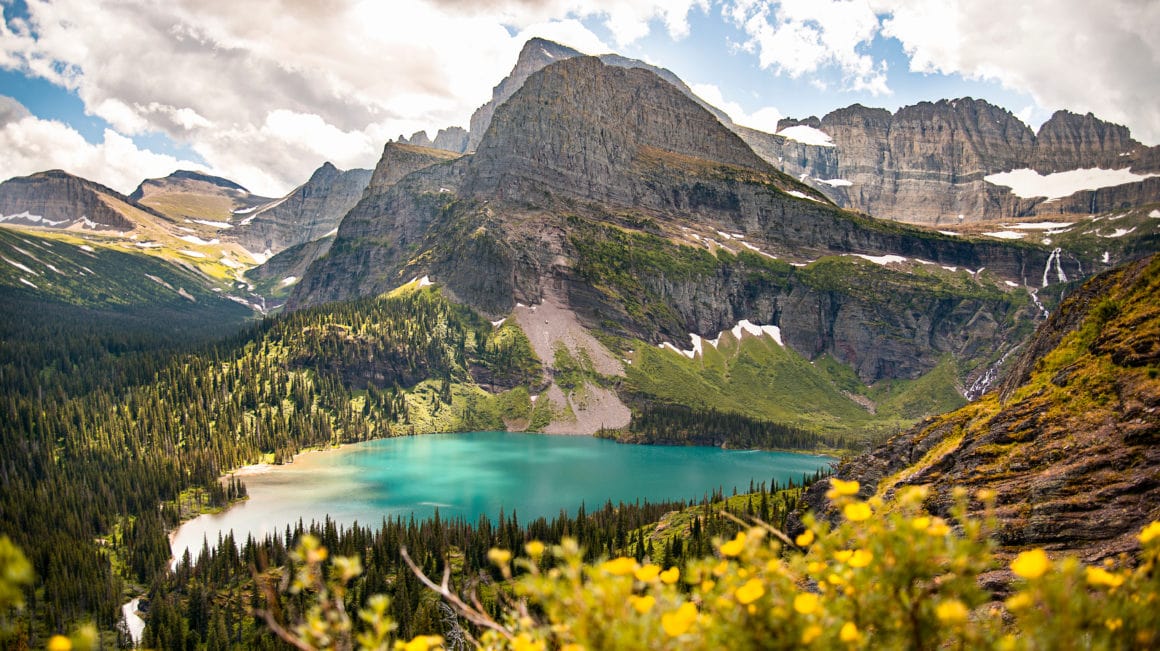
- Grinnell Glacier (Many Glacier) is a strenuous, 7.6-mile (round trip) hike that begins at the Many Glacier Hotel. However, you can shave off 3.4 miles by taking two shuttle boats with Glacier Park Boat Company, crossing Swiftcurrent Lake and Lake Josephine. Then you begin the 1,840-foot climb to the turquoise waters of Grinnell Lake and three glaciers—Grinnell, Salamander, and Gem—in the distance. If conditions permit, you can push on to Grinnell Glacier itself. It’s a heart-pounding trek but worth the effort.
- Iceberg Lake (Many Glacier) is a strenuous, 9.7-mile (round trip) hike with an elevation gain of 1,275 feet that yields stunning alpine lake and mountain views plus carpets of wildflowers. Bears and even moose are common in this area.
An excellent map of the park showing recommended hikes based on mileage, region, and scenic quality is available at the visitor centers and is well worth the money.
If you’re looking to escape the crowds, consider lesser-used trails off Highway 2 along the southern boundary of the park as well as the Belly River and North Fork areas of the park. Consult a ranger on trail conditions.
Staying in and around Glacier
Summer lodging is available in the park at the following locations:
- Apgar Village (west): Apgar Village Lodge & Cabins and Village Inn at Apgar
- Lake McDonald (west): Lake McDonald Lodge, Cabins & Suites and Motel Lake McDonald
- Many Glacier (east): Many Glacier Hotel and Swiftcurrent Motor Inn & Cabins
- St. Mary Valley (east): Rising Sun Motor Inn & Cabins
There also are two backcountry chalets: Granite Park and Sperry.
Year-round lodging is available outside the park in West Glacier, St. Mary, and East Glacier. You’ll find additional accommodations within a 45-minute drive of the park in Browning, Columbia Falls, Kalispell, and Whitefish.
In terms of camping, there are 13 campgrounds. Most of them are first-come, first-served and fill up early on summer days. You can make reservations at Fish Creek (late May through early September), St. Mary (late May through mid-August), Many Glacier (mid-June through mid-September), and Apgar (group sites; late May through early September). These campgrounds in addition to Rising Sun and Two Medicine offer evening ranger programs. RVs and trailers are not recommended at the following campgrounds: Bowman Lake, Cut Bank, Kintla Lake, Logging Creek, Quartz Creek, and Sprague Creek.
Backcountry camping is possible via permit.
If you’re looking for full RV hookups, consider one of the commercial campgrounds outside of the park including West Glacier KOA and St. Mary/East Glacier KOA.
Eating in and around Glacier
During the summer, restaurants and snack bars are open at the following locations:
- Apgar Village (west): Eddie’s Cafe
- Lake McDonald Lodge (west): Jammer Joe’s Grill & Pizzeria, Lucke’s Lounge, and Russell’s Fireside Dining Room
- Many Glacier Lodge (east): Heidi’s Snack Shop, Ptarmigan Dining Room, and Swiss Lounge
- Swiftcurrent Motor Inn & Cabins (east): Nell’s
- Rising Sun Motor Inn & Cabins (east): Two Dog Flats Grill
The all-you-can-eat pizza and salad bar at Jammer Joe’s is actually quite good and very affordable by Glacier standards.
Dining outside the park can be enjoyed year-round in Whitefish, West Glacier, East Glacier, Essex, and St. Mary.
If you head to Whitefish, give the huckleberry beer at Great Northern Brewery a try.
How many days should you plan to spend in Glacier National Park?
To truly appreciate the splendor of Glacier National Park, plan to spend several days exploring Going-to-the-Sun Road and its stops (perhaps on a Red Bus tour), hiking at least one (and hopefully more) trails, and then escaping the crowds to one of the less-visited areas of the park like Two Medicine Valley.
But if you only have one day to experience Glacier National Park, traverse the park along Going-to-the-Sun Road, stretching your legs on short hikes along the way. It’s better to experience some of what Glacier has to offer than none at all.
Image header credit: Shutterstock
